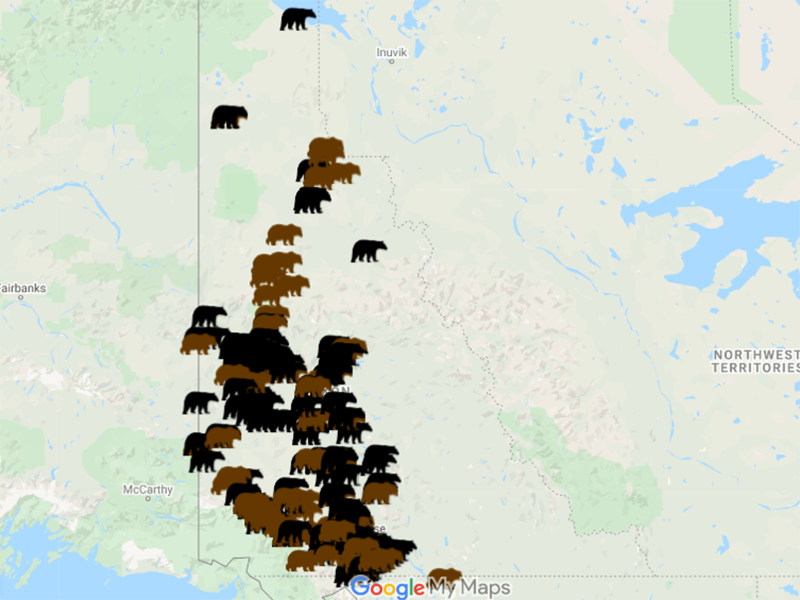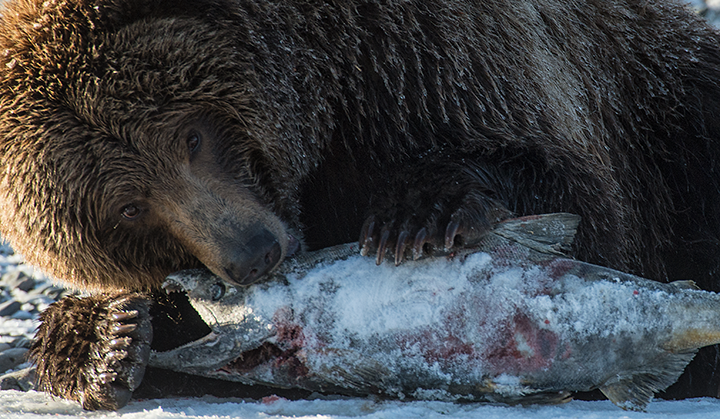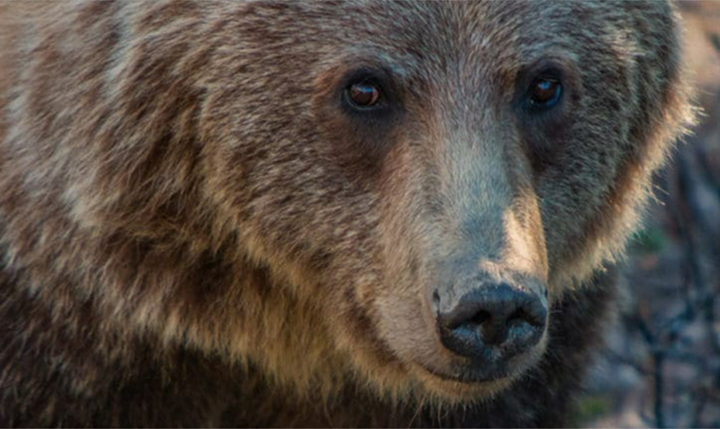The relationship between people and bears can be complicated. The easier it is to understand where, why and how an interaction between the two happened, the easier it can be to work towards solutions that reduce the frequency of these situations.
In 2019, Y2Y was proud to partner with WildWise Yukon on a key project that tells a visual story about people’s interactions with bears.
Working with conservation officers in Canada’s Yukon Territory, WildWise gathered data on human-bear conflicts. That information was then mapped out in a visually engaging way to distribute to Yukon communities and help people coexist with their bear neighbors.
“It’s impossible to look at the map without realizing that we are all in this problem together and that the solutions need to be inclusive of everyone living in bear country.”
WildWise Yukon
Grizzly and black bears can be found throughout Yukon, a part of Canada characterized by vast tracts of relatively intact wilderness. Often in places that are rich in wilderness throughout the Yellowstone to Yukon region (and across the world), people are also going about their day-to-day – whether that’s at work, home or somewhere they’re visiting. This increases the chances of people and wildlife having an interaction.
Attractants such as improperly stored food, highways that cross migration paths, and more, are potential sources of conflict between people and bears. Where there is an incident, there’s also a result. Sometimes the bear moves on, and sometimes they’re killed as a result of people’s actions.

WildWise says that the map tool helps co-managers within each community, including those rural and remote, and its members understand what contributes to conflict so they can work on practical solutions locally. The map has also been a stepping-stone into conversation with many renewable resource councils, which are the primary voice for fish and wildlife management within First Nation Traditional Territories.
How did Y2Y support it?
We’re happy to see a tool such as this being developed to share information and encourage people to live in harmony near wildlife. It’s an important piece of supporting coexistence between people and wildlife in Yukon. While the map is still being updated and added to, Y2Y’s support on this partner project allowed WildWise to progress down the path towards a fully functioning map tool that will soon be an asset to many Yukon communities.
The Yellowstone to Yukon mission progresses because of collaboration. That’s why we’re proud to continue with our partner grants program — one that has been running since 1998.
Y2Y’s partner grant program is one of the ways we support organizations whose work underpins the Yellowstone to Yukon mission. These on-the-ground projects complement our efforts and mobilize work that we wouldn’t be able to do on our own. We are pleased to provide this financial foundation for the conservation community, because we know that it is only together that we will achieve success.
In 2019 alone, we invested more than $60,500 in 18 organizations that will help protect and connect the habitat from Yellowstone to Yukon so people and nature can thrive. Applications for funding must be for a project that supports Y2Y’s vision and mission.
Proud partners: More about WildWise Yukon
WildWise Yukon and its umbrella organization, The Centre for Human-Wildlife Conflict Solutions, is a community driven, non-profit society established in 2012 that strives towards creating a safe, healthy environment for people and wildlife in Yukon. One of its key objectives is to reduce the number of instances where animals are relocated or eradicated due to negative encounters with people.


